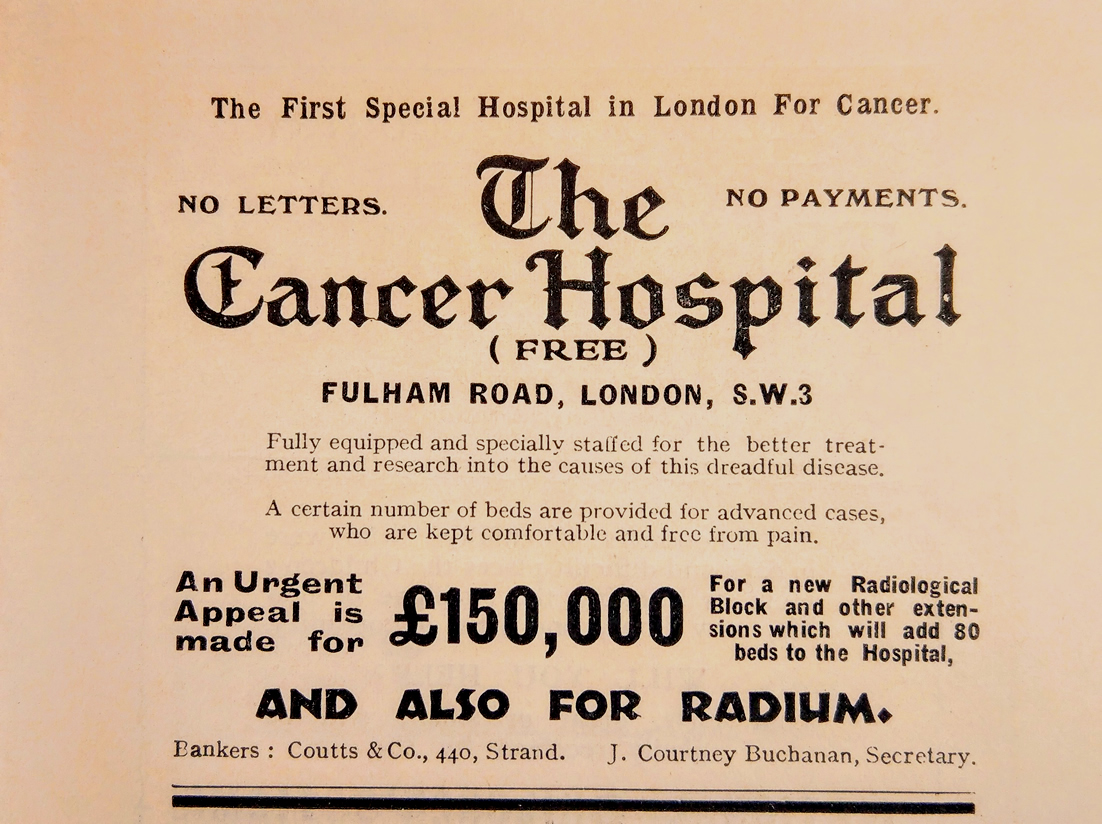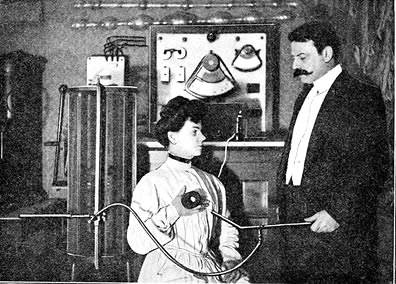Oncology in the industrial period
Many students from universities such as Oxford, Cambridge and Edinburgh attended privately-taught human anatomy lessons in London.
So it followed that not only was the first purpose-built medical school (The Medical College) located at the London Hospital but also the first hospital in the world specialising in cancer treatment was also founded in the city. The Free Cancer Hospital, which opened in Cannon Row, Westminster, in 1851, is now known as the Royal Marsden hospital and is still a leading centre for cancer research and treatment.
Nonetheless, oncology was still in its infancy. Almost three quarters of cancer deaths recorded at this time were breast, ovarian and uterine, and in 1846 Walter Walshe in 1846 concluded that cancer was predominantly a ‘woman’s disease’. Various explanations were attributed to cancer epidemiology, including lip and oral cancers being linked to excessive pipe smoking, alcohol consumption and poor oral hygiene. An increase in cancers being seen in men during the later 19th century was put down to men succumbing to women’s diseases due to their lack of proper exercise and excess of food. Treatments, as a result, were still experimental.
The treatment of cancer by cytolsis. The treatment of cancer by high frequency cytolysis using the d'Arsonval-Gaiffe apparatus. Electrotherapy. (Public domain: Wellcome Collection)
Some medical practitioners were convinced quite early on that ‘glands’ were involved in the spread of cancer and believed that mastectomies accompanied by removal of the lymph nodes could prevent cancer spreading. However, it was only when the fine lens microscope was developed in the mid 19th century that oncology made major advancements.
Between 1839 and the 1860’s, ‘cell theory’ and ‘cellular pathology’ finally gave oncologists the building blocks they needed to understand cancerous changes. In 1874, it was formally recognised that cancer was the result of degenerative changes in cells – or ‘pathological cellular hyperplasia’, the modern clinical definition of cancer.
Next: Cancer biology today










